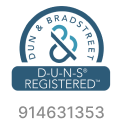Being a freelance instructional designer, having an online portfolio is essential to show your skills and win over new clients. However, putting together a portfolio can be a challenge, especially if you are just starting out. If you have experience, the challenge is to select the right projects to highlight your skills without exaggerating. It is just beginning, it is difficult to find ways to show your potential, even with few early examples.
In this post, we will guide you on what to include in your portfolio and how to launch it effectively on the internet. Also, we will give you tips to avoid common mistakes and ensure that your portfolio stands out in the e-learning market.
1. What to include in your e-Learning portfolio
The first question that many freelancers face is what exactly we should include in our portfolio. Here are some elements you should consider:
- Real jobs and personal examples: You have developed projects for clients, including these jobs. Therefore, it is still starting, create personal examples. This could be a training simulation or an e-learning module that you created to show your skills.
- Short and efficient demonstrations: avoid including entire courses. Instead, create small interactive demonstrations that illustrate your hardware domain and user experience. This way, potential clients can explore their work quickly.
- Diversity of projects: show your versatility. Include projects from different industries and formats, such as videos, quizzes, interactive scenarios, etc. This reinforces that you can work with a variety of topics and audiences.
- Customer reports and results obtained: If possible, include customer reports or course success metrics, such as engagement rates or learning outcomes.
- Personal and contact information: It is not necessary to include a brief biography, explaining your experience and your specialties, as well as clear contact information.
2. Where to host your portfolio
Now that you already know what to include in your portfolio, the next step is deciding where to host it. There are several options:
- Online portfolio platforms: Sites like Behance, Adobe Portfolio and Dribbble are the best options for designers, offering an attractive and easy-to-navigate visual interface.
- Personal sites: Creating a personal site, using platforms like WordPress or Wix, offers greater control over the design and customization. Here, you can add a blog, specific landing pages for clients and much more.
- LinkedIn: Do not underestimate the power of a strong presence on LinkedIn. You can include direct links to your projects, add detailed descriptions and receive recommendations from previous clients.
3. Personal branding and design
Your portfolio must reflect your identity as a freelancer. Isso means that branding and design are fundamental:
- Visual consistency: Use a core and font scheme that aligns with your style and the market you want to attract. Consistency creates a sense of professionalism and coesão.
- Personal logo: Consider creating a personal logo that can be applied to your site, social networks and promotional materials. Isso helps create a strong and memorable brand.
- User Experience (UX): ensures that your portfolio is easy to navigate. Avoid confusing menus and pages that take a while to load. Each click should be an intuitive journey for the visitor.
4. Promoting your portfolio
Creating a portfolio is just the end of the battle. Promoting your work is equally important. Some sayings:
- Social networks: Share your projects on platforms such as LinkedIn, Twitter and Instagram. Use relevant hashtags like #elearning, #instructionaldesign and #portfolio to increase your reach.
- Groups and forums: participate in e-learning groups on LinkedIn or in specialized forums. Share your experiences, get feedback and post the link to your portfolio.
- SEO (Otimization for Search Mechanisms): If you have created a personal site, make sure that it is optimized for search engines such as Google. Use relevant keywords throughout the site to help potential customers find you.
5. Common mistakes to avoid
Some errors may jeopardize the effectiveness of your portfolio. Here are some two most common ones:
- Excess content: less is more. If your portfolio is flooded with too many projects, it may confuse visitors. Choose the best examples and keep your content organized and concise.
- Lack of clarity: Make sure your role in each project is clear. Explain exactly what you did, the tools you used and the results you achieved.
- Update: An outdated portfolio may give you the impression that you are not more active in the market. Keep your portfolio always updated with your most recent projects.
Creating and launching an e-learning portfolio on the internet is a crucial step for any freelancer who wants to stand out in the market. Includes a variety of jobs, chooses an effective hosting platform and actively promotes your portfolio. At the same time, a well-structured portfolio can be key to attracting new clients and opportunities.
Ready to start? Share your portfolio and help other freelancers by sharing your work and experiences!
I want to know more about it Articulate 360 Teams and increase your portfolio with the best educational solutions, with two specialists Software.com.br.









 5 min reading
5 min reading




